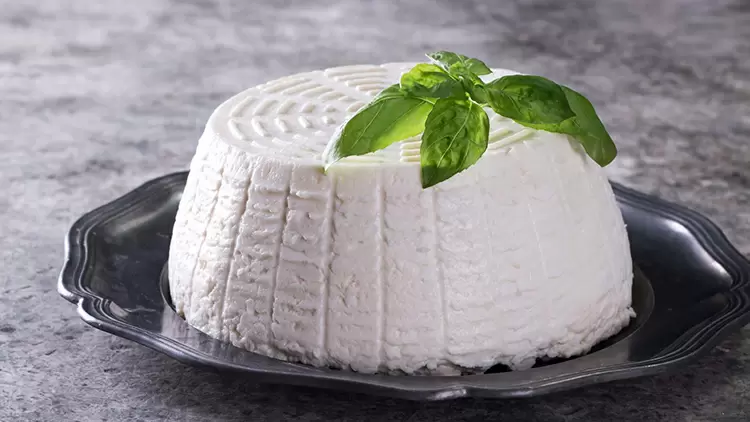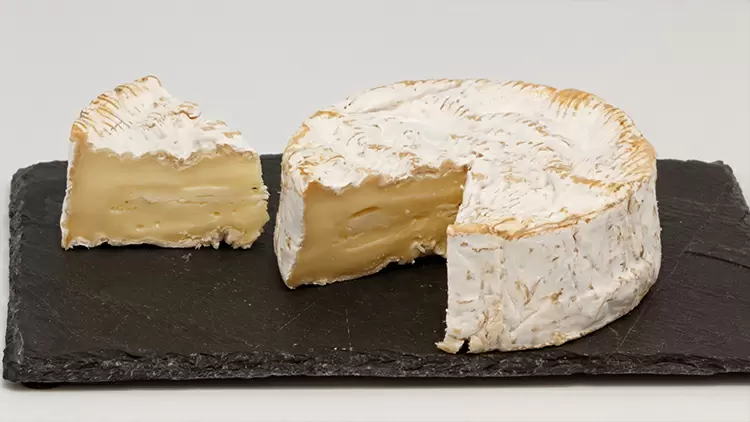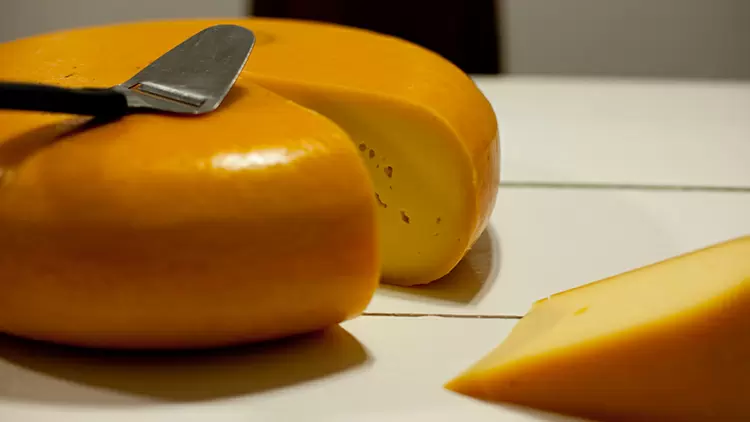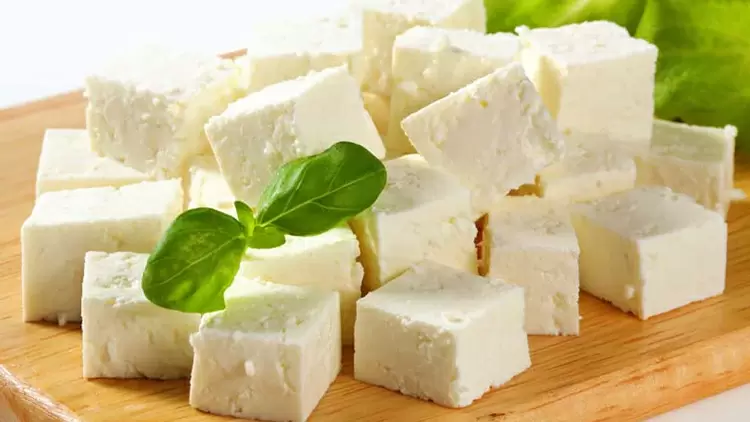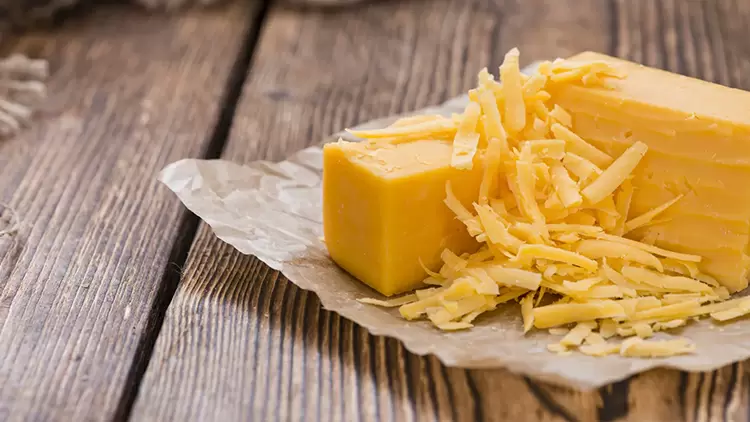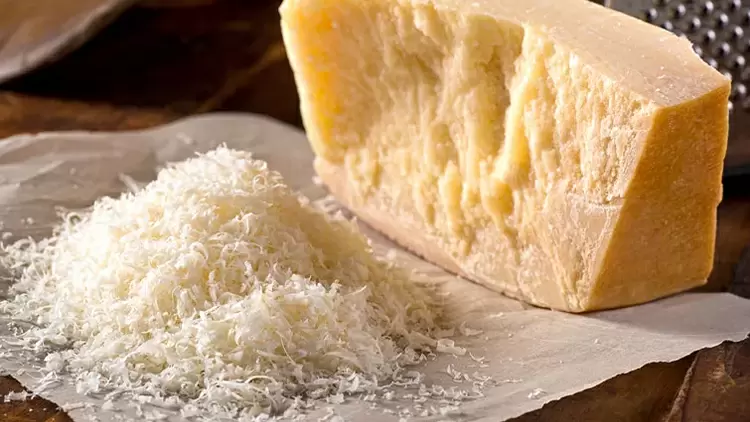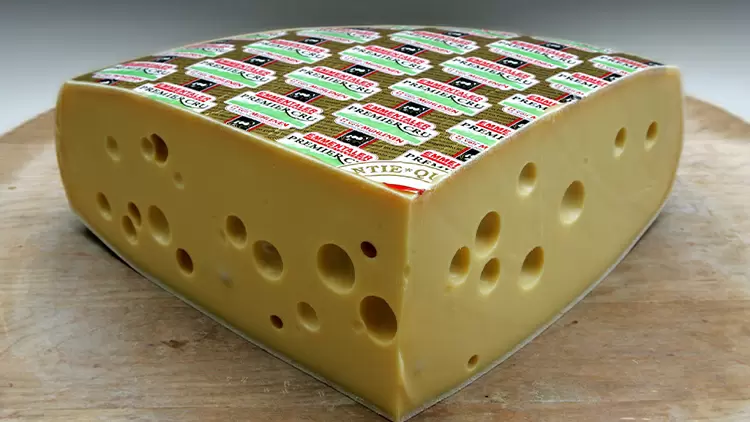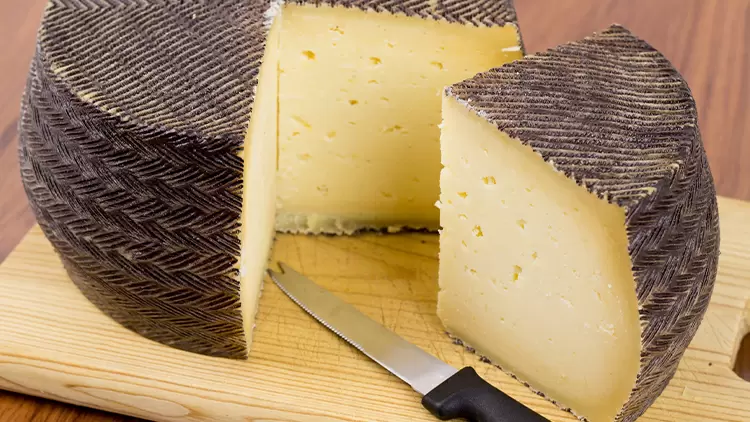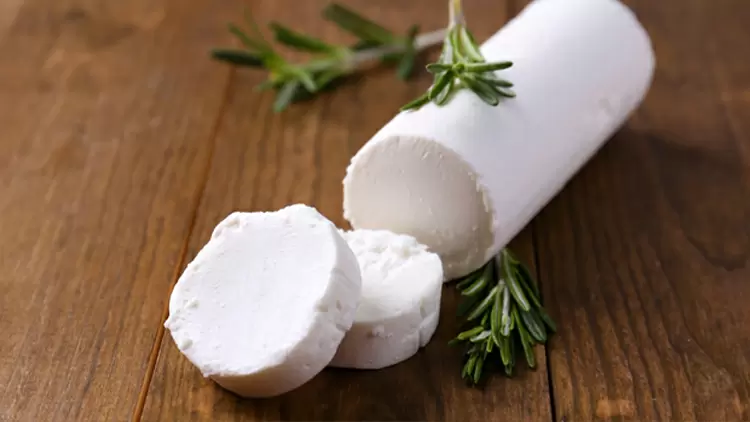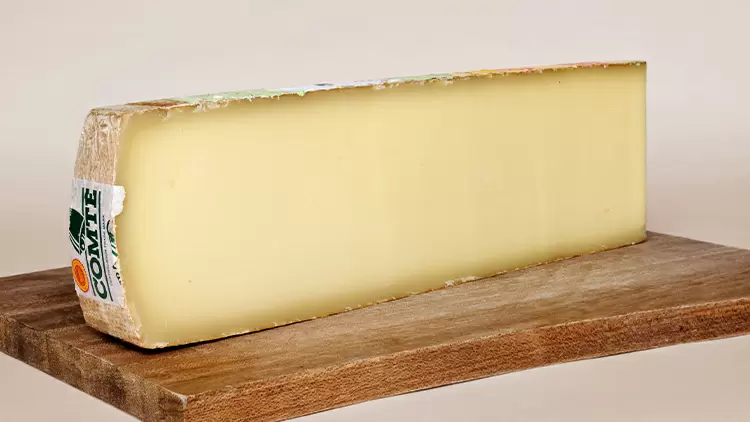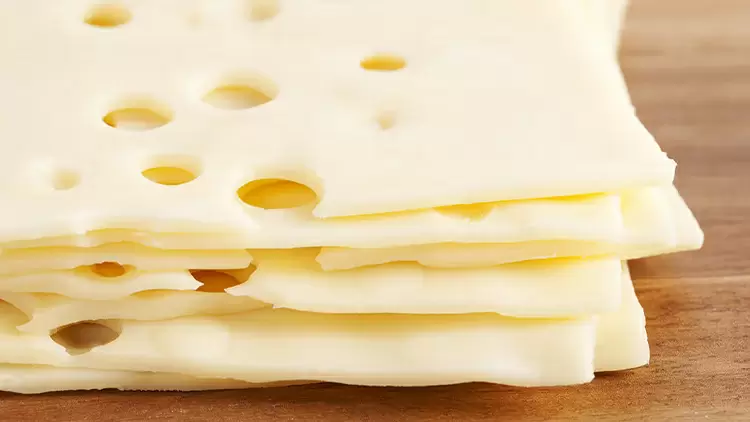![Mozzarella]()
You Got: Mozzarella
Origin: Campania and Naples regions of Italy.
History: Originating in the south of Italy, mozzarella is traditionally made from buffalo milk. Nowadays, you can also find Mozzarella made with regular cow's milk.
Texture: Mozzarella is soft and bouncy. When heated, it can stretch out like a fun cheese string.
Flavor: It's not too strong and has a mild, creamy taste that's easy to enjoy.
Best ways to eat: It's great on pizza because it melts so well. You can also make the tasty Caprese salad with fresh tomatoes and basil. Another yummy idea is to put it on toast, then bake until it's just a little gooey – it's super delicious that way!
![Brie]()
You Got: Brie
Origin: France.
History: It's been around for a long time, dating back to the Middle Ages.
Texture: The rind is soft, and the inside is smooth and creamy, almost like it's about to melt.
Flavor: Brie has a rich, milky taste with a hint of mushrooms. As it gets older, the flavor gets stronger.
Best ways to eat: You can enjoy Brie with bread or fruit. It's also good when you warm it up a bit in the oven until it's gooey, then spread it on crackers.
![Burrata]()
You Got: Burrata
Origin: Italy.
History: Originated in the Puglia region of southern Italy around the 1920s.
Texture: A solid layer of mozzarella cheese on the outside, with soft curd and whipped cream wrapped around the inside, rich, smooth and delicate.
Flavor: Creamy and mellow with a hint of sweetness.
Best ways to eat: with fresh tomatoes, basil leaves, olive oil and black pepper, in salads or pasta; it can also be served with slices of toasted bread.
![Ricotta]()
You Got: Ricotta
Origin: Italy.
History: Has a long history of production, traditionally made with whey.
Texture: Light, delicate and soft, similar to cream.
Flavor: Light and slightly sweet.
Best ways to eat: Can be used to make Italian lasagna, cheesecake and other desserts; can also be used with fruit, honey as breakfast or afternoon tea snacks.
![Camembert]()
You Got: Camembert
Place of origin: France.
History: It was created in the 18th century and has become one of France's well-known cheeses.
Texture: It has a soft rind and a buttery, smooth interior.
Flavor: Camembert has a rich, creamy taste with a distinct mushroom aroma.
Best ways to eat: Enjoy Camembert with bread or fruit. It's also tasty when baked in the oven and served with roasted vegetables or meat.
![Gouda Dutch Gouda Cheese]()
You Got: Gouda Dutch Gouda Cheese
Origin: Netherlands.
History: Originated in the Gouda region of the Netherlands, it has a history of several hundred years.
Texture: Gouda can be semi-soft to hard, and it gets firmer as it ages.
Flavor: It has a mild taste with a hint of sweetness and nuttiness.
Best ways to eat: You can eat Gouda on its own, or slice it thin for sandwiches. It also pairs well with fruits like apples and grapes.
![Feta cheese]()
You Got: Feta cheese
Origin: Greece.
History: Traditional Greek cheese with a long history.
Texture: Soft texture, easily crumbled.
Flavor: Savory with a hint of acidity.
Best ways to eat: Commonly found in Greek salads with tomatoes, cucumbers, and olives; can also be served on top of roasted vegetables for added flavor.
![Cheddar Cheese]()
You Got: Cheddar Cheese
Origin: England.
History: Originated in the Cheddar region of England and has a long tradition.
Texture: The texture can be semi-soft to hard, and it gets more chewy as it matures.
Flavor: It has a rich flavor that can vary from mild to sharp, depending on how long it's been aged.
Best ways to eat: You can enjoy Cheddar on its own or use it in sandwiches and burgers. It also goes well with a glass of cider or beer.
![Parmesan]()
You Got: Parmesan
Origin: Italy.
History: With hundreds of years of production history, it is a classic Italian cheese.
Texture: It's hard and has a grainy texture.
Flavor: Parmesan has a strong, rich flavor with notes of nuts and salt.
Best ways to eat: It's great for grating over pasta dishes and risotto to add depth of flavor. You can also sprinkle it on salads or soups for an extra kick.
![Cottage Cheese]()
You Got: Cottage Cheese
Origin: Common in Europe and the United States.
History: Popularized in the United States in the early 20th century.
Texture: Soft texture, with a certain graininess.
Flavor: Light flavor, slightly sour.
Best ways to eat: It can be used with fruits and honey as a healthy breakfast or snack; it can also be used to make salads.
![Emmental Cheese]()
You Got: Emmental Cheese
Place of origin: Switzerland.
History: A famous Swiss cheese with a history of several centuries.
Texture: Hard texture with large air pockets.
Flavor: Mild flavor, lightly sweet and nutty.
Best ways to eat: Can be eaten directly, or with ham, bread, etc.; suitable for wine pairing.
![Manchego Cheese]()
You Got: Manchego Cheese
Origin: Spain.
History: A traditional Spanish cheese with a unique production process that originated in the 16th century.
Texture: Hard texture, with a certain chewiness.
Flavor: Rich, creamy and nutty.
Best ways to eat: directly or with Spanish ham, olives, etc.; can also be used in sandwiches.
![Goat Cheese]()
You Got: Goat Cheese
Origin: Produced all over the world.
History: Long history, different production styles in different regions, common in the Mediterranean region.
Texture: Variety of textures, from soft to hard.
Flavor: Unique flavor, usually with some acidity and nastiness, with flavors ranging from mild to pungent.
Best ways to eat: Serve with fruits and nuts; can be used in salads or spread on bread.
![Comté cheese]()
You Got: Comté cheese
Origin: France.
History: Originated in the 15th century, it has a long history and traditional production techniques.
Texture: Firm, delicate texture with airy holes.
Flavor: Strong flavor with nutty and fruity aromas.
Best ways to eat: eaten directly or with bread and fruit; goes well with red wine.
![Swiss Cheese]()
You Got: Swiss Cheese
Place of origin: Switzerland.
History: One of Switzerland's specialty cheeses, originating in the 18th century.
Texture: hard texture with many air holes.
Flavor: Mild flavor with a hint of sweetness.
Best ways to eat: on sandwiches, burgers, etc.; served with ham and traditional Swiss bread.
![Danish Blue]()
You Got: Danish Blue
Origin: Denmark.
History: Since around the middle of the 20th century.
Texture: Semi-soft texture with a blue mold texture.
Flavor: Strong flavor, with a distinctive taste of blue mold, spicy and salty.
Best ways to eat: with fruits and nuts; can also be used as a spread on crackers or with wine.
Please finish the question first.



